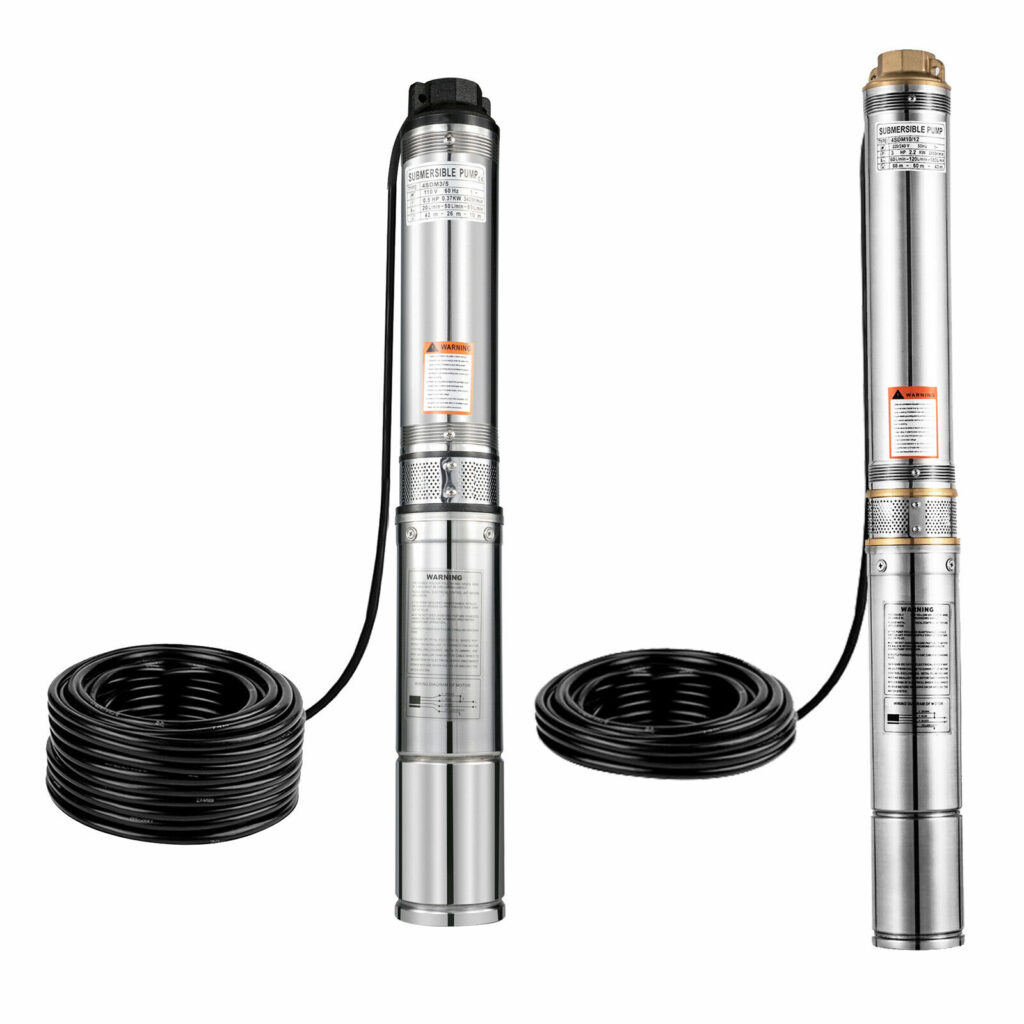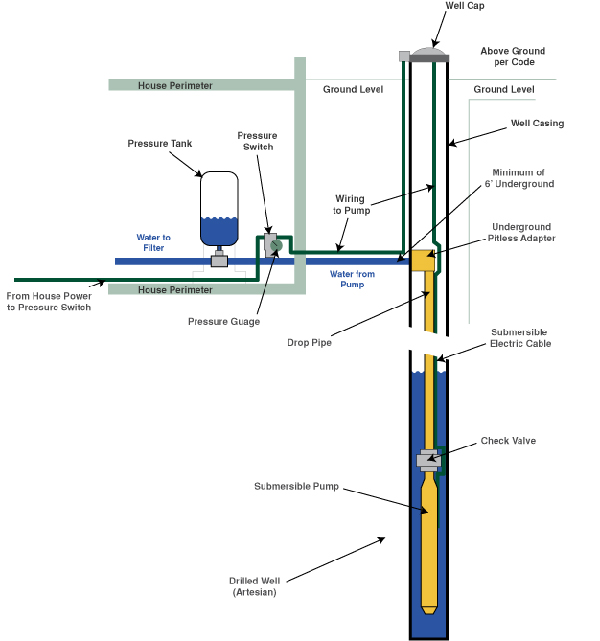Delving Deep into Submersible Well Pumps: How Do They Work?


(adsbygoogle = window.adsbygoogle || []).push({});
Table of Contents
Introduction to Submersible Well Pumps
To provide a reliable water supply, submersible good pumps are an essential component in many homes and businesses. Operating beneath the surface, these pumps extract water from wells, but how exactly do they work? As a trusted source of information about machinery and equipment, Linquip provides the answers to these questions and more.
Components of a Submersible Well Pump
Before understanding how they work, it’s helpful to know the key components of a submersible well pump:
- Motor: Powers the pump to move water.
- Impellers: Spin to create suction, drawing water into the pump.
- Diffusers: Help to channel the water upwards.
- Check Valve: Prevents water from flowing back down into the well.
How Does a Submersible Well Pump Work?
A submersible well pump operates in a multi-step process:
- Activation: The pump activates when the pressure in the water storage tank drops below a certain point.
- Water Drawn Into the Pump: Powered by the motor, the impellers spin, creating suction that draws water into the pump.
- Water Pushed Upwards: The spinning impellers push water into the diffusers, which channel the water upwards through the well’s piping system.
- Water Discharge: The water reaches the surface, passing through a check valve that prevents it from flowing back down into the well. It is then stored in the water storage tank.
- Deactivation: The pump deactivates once the water storage tank’s pressure reaches a certain point.

submersible well pumps (Reference: houseneeds.com)
Maintenance Tips for Submersible Well Pumps
Regular maintenance ensures the longevity and effectiveness of a submersible well pump:
- Regular Inspection: Regularly inspect the pump and its components for any signs of wear or damage.
- Check the Electrical System: Ensure the electrical connections are secure, and there is no water leakage into the system.
- Professional Check-Up: A professional check-up every few years can help identify potential issues before they become larger problems.
Conclusion and Final Thoughts
Understanding how a submersible well pump operates can ensure it remains in good working order, providing a reliable water supply for years to come. At Linquip, we are passionate about making complex systems easy to understand and providing individuals with the knowledge they need to maintain their equipment effectively.
Whether you’re seeking more information about submersible good pumps or any other machinery, trust Linquip to provide you with the necessary resources and expert guidance. With Linquip by your side, navigate the world of machinery and equipment with ease and confidence, knowing you have reliable, accessible information at your fingertips.
| Step | Description |
|---|---|
| Activation | The pump activates when the pressure in the water storage tank drops below a certain point. |
| Water Drawn Into the Pump | The motor powers the pump, spinning the impellers and creating suction that draws water into the pump. |
| Water Pushed Upwards | The spinning impellers push water into the diffusers, which channel the water upwards through the well’s piping system. |
| Water Discharge | The water reaches the surface, passing through a check valve that prevents it from flowing back down into the well. The water is then stored in the water storage tank. |
| Deactivation | The pump deactivates once the pressure in the water storage tank reaches a certain point. |
And here’s another table listing some key components of a submersible well pump:
| Component | Function |
|---|---|
| Motor | Powers the pump to move water. |
| Impellers | Spin to create suction, drawing water into the pump. |
| Diffusers | Channel the water upwards. |
| Check Valve | Prevents water from flowing back down into the well. |
For a more detailed understanding, remember to consult the specific user manual for your pump or reach out to a professional. This table offers a brief overview of the process but does not cover all the intricacies and variations across different models and brands of submersible good pumps.
Download PDF for Delving Deep into Submersible Well Pumps
You can download the PDF format of this post from the link provided here.
Buy Equipment or Ask for a Service
By using Linquip RFQ Service, you can expect to receive quotations from various suppliers across multiple industries and regions.
Click Here to Request a Quotation From Suppliers and Service Providers
Read More on Linquip
- Types of Submersible Pumps: All Classification With Details
- 20 Parts of Submersible Pump + PDF
- 3 Types of Well Pumps + Applications
- The 10 Best Well Pump (Clear Guide)
- Understanding Heat Pumps in Winter: How Do They Work?
- Optimize Your Pump System with Linquip’s Pump Flow Rate Calculator
